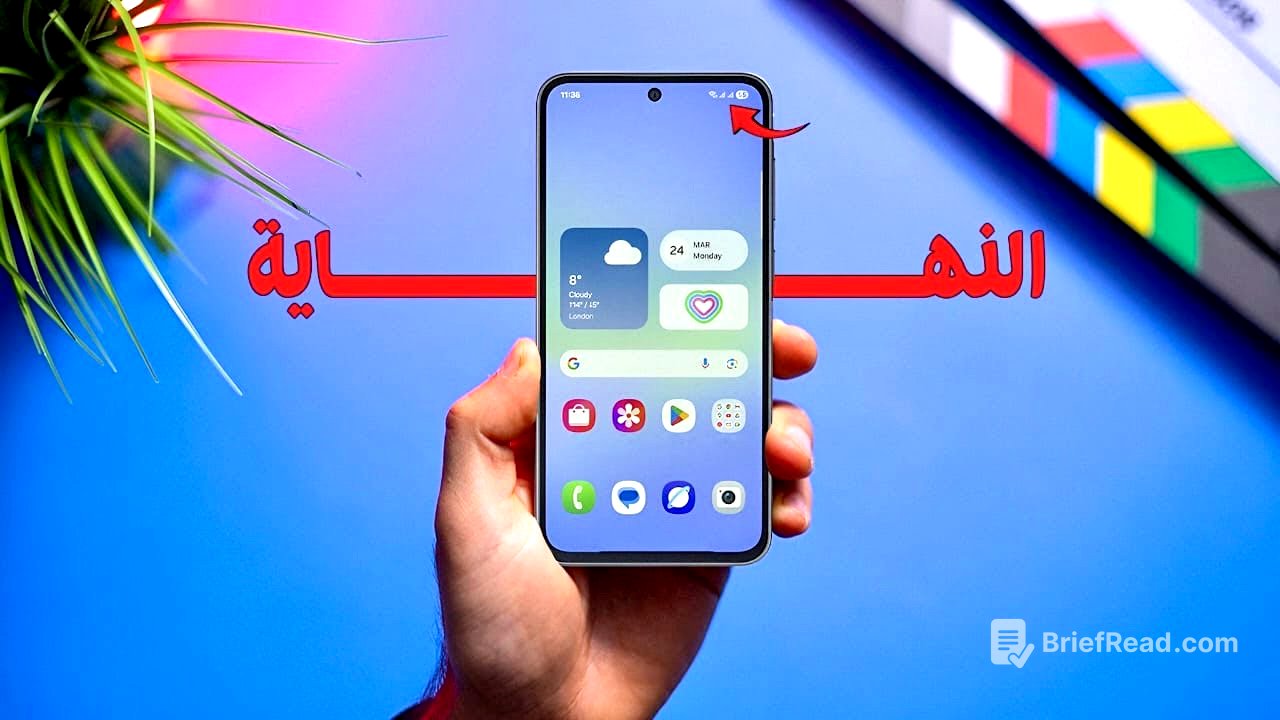TLDR;
This video discusses the current state of Samsung mobiles, particularly in the Egyptian market, addressing recent issues and user concerns. It examines problems such as manufacturing defects, screen flickering, processor choices, pricing strategies, and accessory omissions. The video also compares Samsung's approach to that of Apple and Chinese competitors, and concludes that while Samsung faces challenges, it remains a strong company with the potential to address these issues and maintain its market position.
- Manufacturing defects in A36 and A56 models.
- Samsung's use of flicker screens and Exynos processors.
- Rapid price drops after release and the "empty box" trend.
- Samsung's strengths, such as software updates and dust/water resistance.
Introduction: Samsung's Current Market Position [0:00]
The video starts by addressing concerns about Samsung's future, especially in the Egyptian market, following recent issues with their mobile phones. It questions whether Samsung is offering value for money and whether users are losing trust in the brand. The presenter aims to answer these questions by discussing the real problems Samsung faces and whether it can remain a competitive company or if users will switch to other brands.
Manufacturing Defects: The Camera Frame Issue [1:33]
The first problem discussed is the manufacturing defect in the A56 and A36 models, specifically the camera frame movement. The camera frame could detach and break the back of the phone. The presenter clarifies that this issue isn't due to cheapness but rather a design choice. Samsung opted for an easier manufacturing process by making the camera frame separate from the back, instead of designing them as one integrated part.
Screen Flickering: Samsung vs. Competitors [2:48]
The second issue is Samsung's continued use of flicker screens, which can cause eye strain in low lighting conditions. The presenter notes that Samsung seems to be following Apple's lead in this regard, rather than focusing on what Android competitors like Honor and Realme are doing to reduce flicker. The presenter argues that Samsung should differentiate itself from Apple since it operates within the Android ecosystem, where users have many alternatives.
Processor Choices: Exynos vs. Qualcomm [4:35]
The third problem is Samsung's persistent use of Exynos processors, despite user complaints about overheating. Even when using Qualcomm processors, they sometimes revert to Exynos in subsequent models, like with the A56. The presenter suggests Samsung is trying to prove the quality of its processors but should instead listen to user feedback and prioritize their preferences. The lack of developer support for Exynos processors in games is also highlighted as a drawback.
Pricing Strategy: Rapid Price Drops [5:50]
The fourth major issue is the rapid price drops of Samsung mobiles after their release, sometimes by as much as 5,000 to 6,000 pounds. The presenter questions why Samsung doesn't offer the lower price from the beginning, as these drops upset early adopters and erode brand loyalty. Unlike some other companies that maintain their prices for longer periods, Samsung's quick price reductions discourage users from buying their phones at launch.
Accessory Omissions: The "Empty Box" Trend [7:12]
The fifth defect is the "empty box" trend, where Samsung omits essential accessories. While Apple can get away with this due to its unique iOS ecosystem, Samsung's Android competitors are often more generous with included accessories. The presenter suggests Samsung might be doing this to offer mobiles at a cheaper price, but it ultimately harms the user experience. Additionally, providing a 45-watt charging head but only including a 25-watt cable is seen as misleading.
Additional Defects: Network Issues and Outdated Technology [7:58]
The video identifies several other flaws, including weak network performance in mid-range and budget Samsung phones, which the company attributes to safety concerns about radiation levels. The presenter finds this explanation unconvincing, as flagship phones have strong networks without such issues. Other shortcomings include not using silicon carbon technology and IP69 water resistance, both of which are common among Chinese competitors.
Screen Design: Notch vs. Punch-Hole [9:47]
The presenter criticizes Samsung's continued use of the old-style notch design in cheaper phones like the A20 and A16 series. While the A16 might be somewhat acceptable due to its other features like an AMOLED screen and ultra-wide camera, the A20 series is seen as simply cheap. The presenter urges Samsung to adopt punch-hole screens, which most other companies have already implemented.
Conclusion: Is This the End for Samsung? [10:45]
Despite these numerous defects, the presenter concludes that this is not the end for Samsung. The identified problems are solvable and don't necessarily spell the company's demise. Samsung remains a best-selling brand, with models like the A16, A34, and A36 offering good value for money. Samsung's strengths include long-term software updates and dust/water resistance. The presenter emphasizes that Samsung needs to listen to user feedback and adapt to stay competitive, particularly by focusing on what Chinese companies are doing in the Android market.









